How might we...
...explain concepts around data use and value to people
Clear illustrations can effectively educate people about data flow and data connections in a step-by-step way.
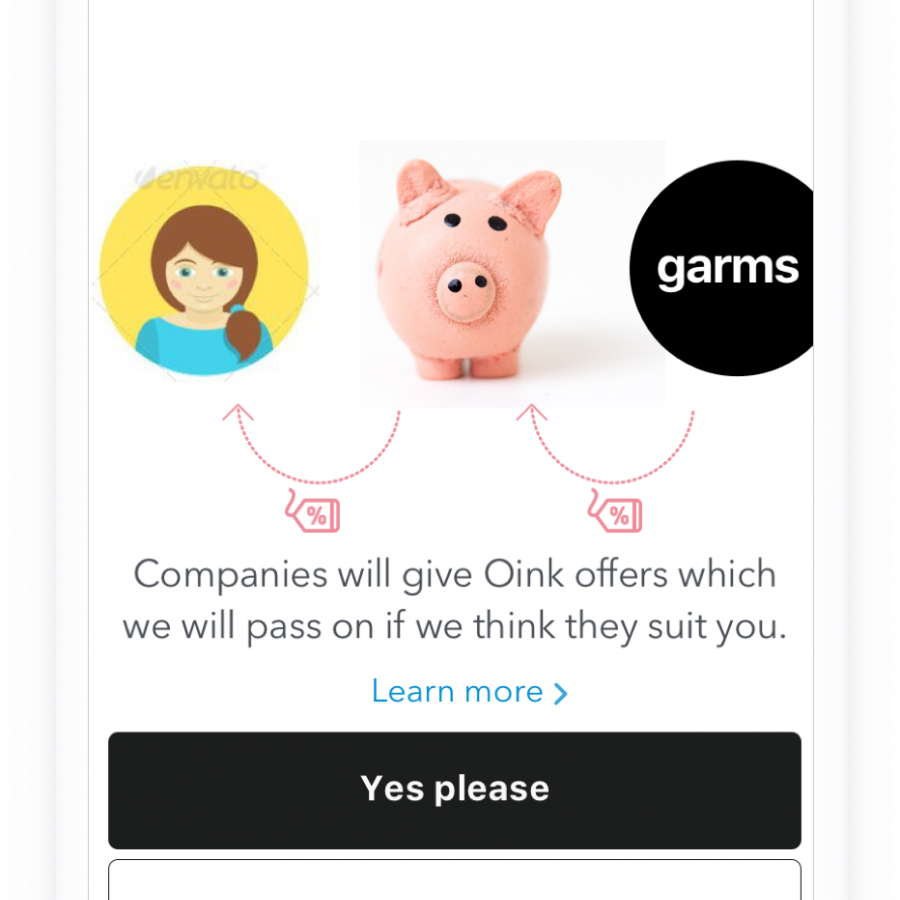
Oink is a fictional challenger bank aimed at a younger market who don't rely on branch-based services. Oink aims to make people’s spending habits more visible and to encourage short and long-term saving. To do this effectively, Oink relies on data gathered by monitoring people's daily purchases, cash movements, and displays suggestions to guide them towards meeting financial goals.
In order to provide the service, Oink is powered by some of the following data:
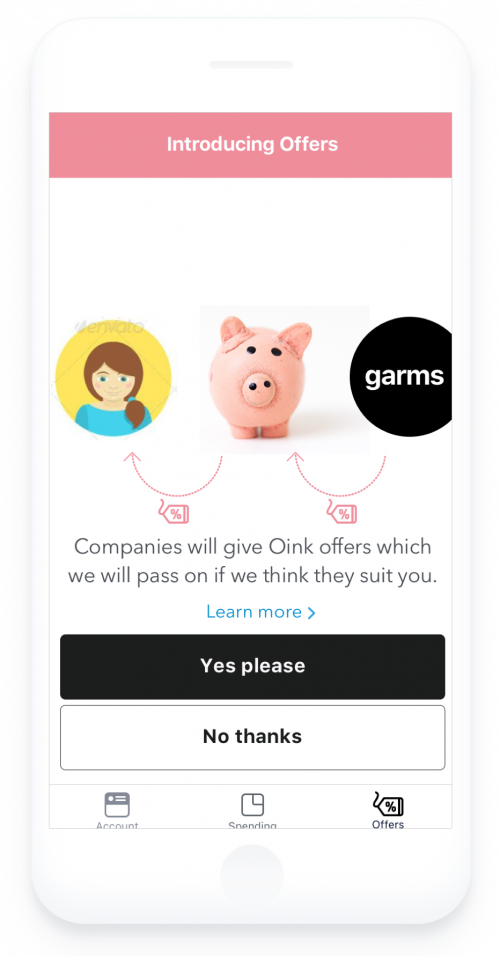
A problem for products that process data is how they should leverage this information, how they explain the consequences of sharing this data, and how they get the suitable level of consent from people. This is especially important in the case of Oink, whose focus is on a younger audience. It's crucial to provide people with a sufficient level of information about the service, a clear understanding of the consequences, and to give them freedom to tailor their level of sharing.
How might we...
...explain concepts around data use and value to people
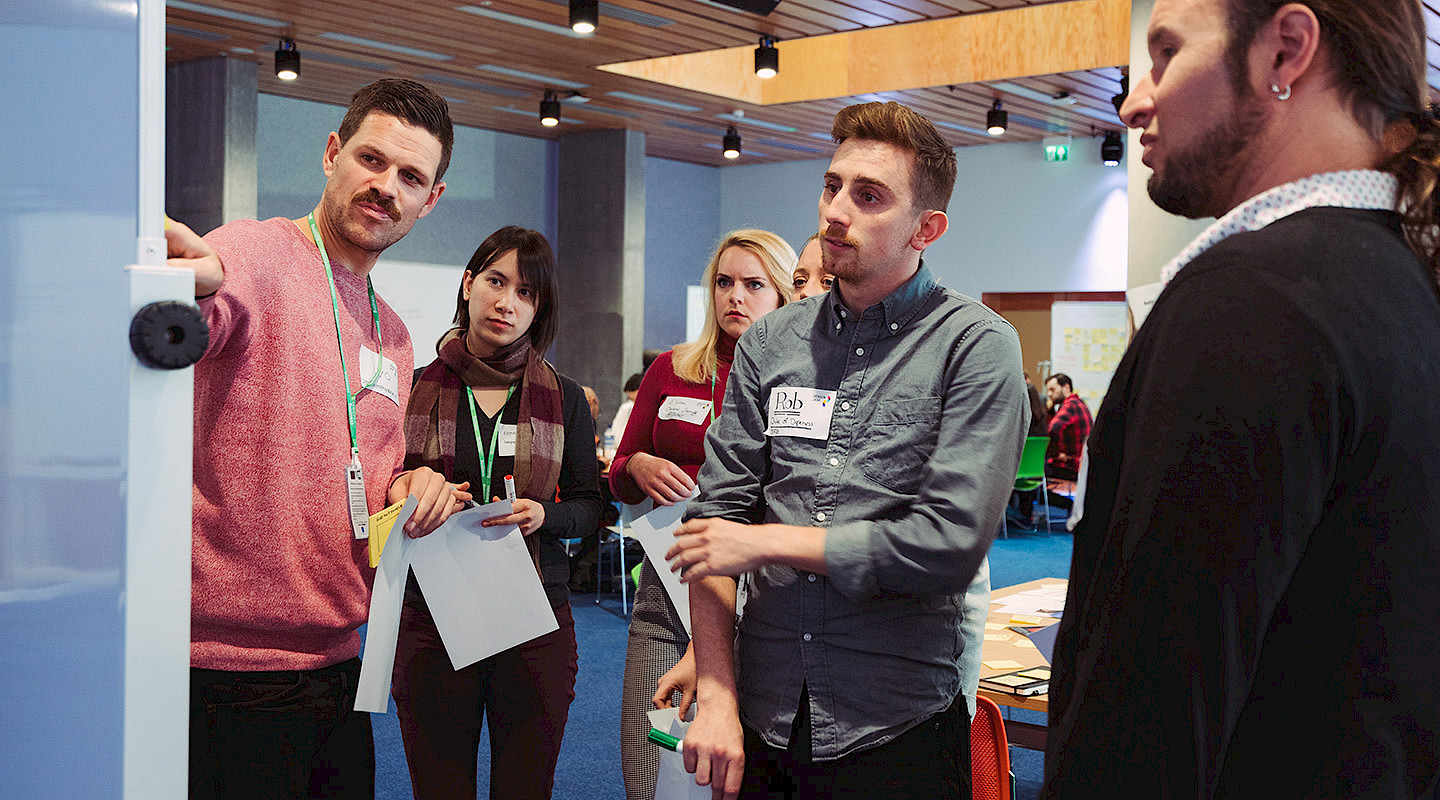
Utilising the API into Oink, third parties can offer discount services to Oink customers based on their spending patterns. Oink introduces the concept of third party data sharing in three simple steps, using simple visuals to express the data relationships between the person, Oink and third party companies:
People are then given the choice to accept or decline the functionality, and declining will not stop people from using the service
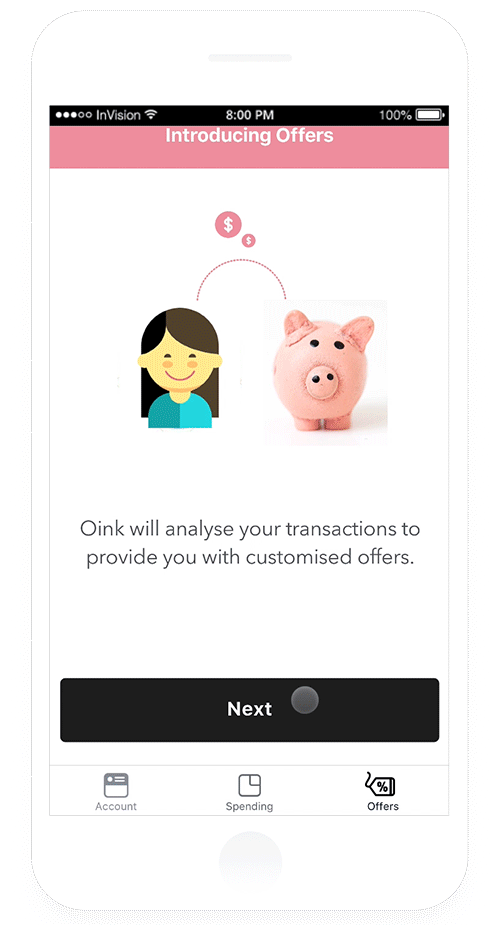
After selecting 'Yes, Please' to Offers, Oink gives people the ability to see which brands are interested in them. They can choose to engage with them, block them or snooze for a given period of time. This gives people flexibility and control over how brands can engage with them, and tailor the experience to make it more relevant to them.
This is particularly relevant to young people, who have clear relationships with brands at different stages in their lives, and these relationships change over time.
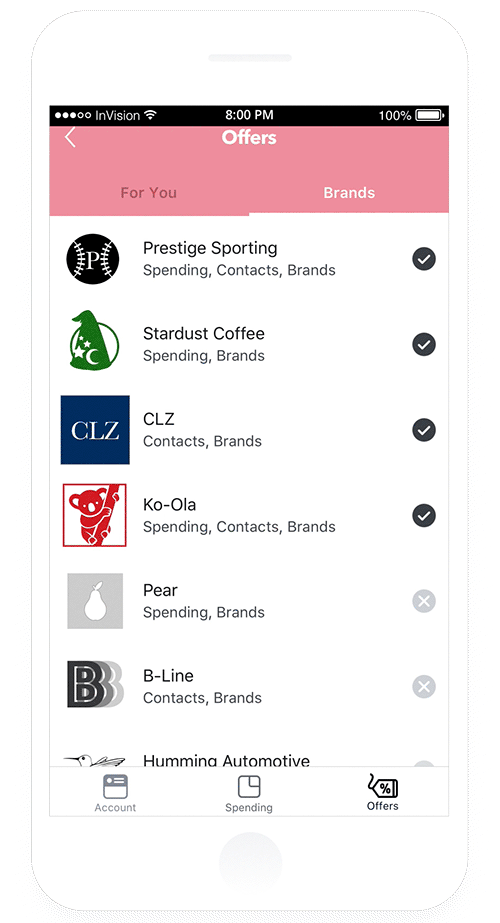
How might we build on Oink's ideas to...
